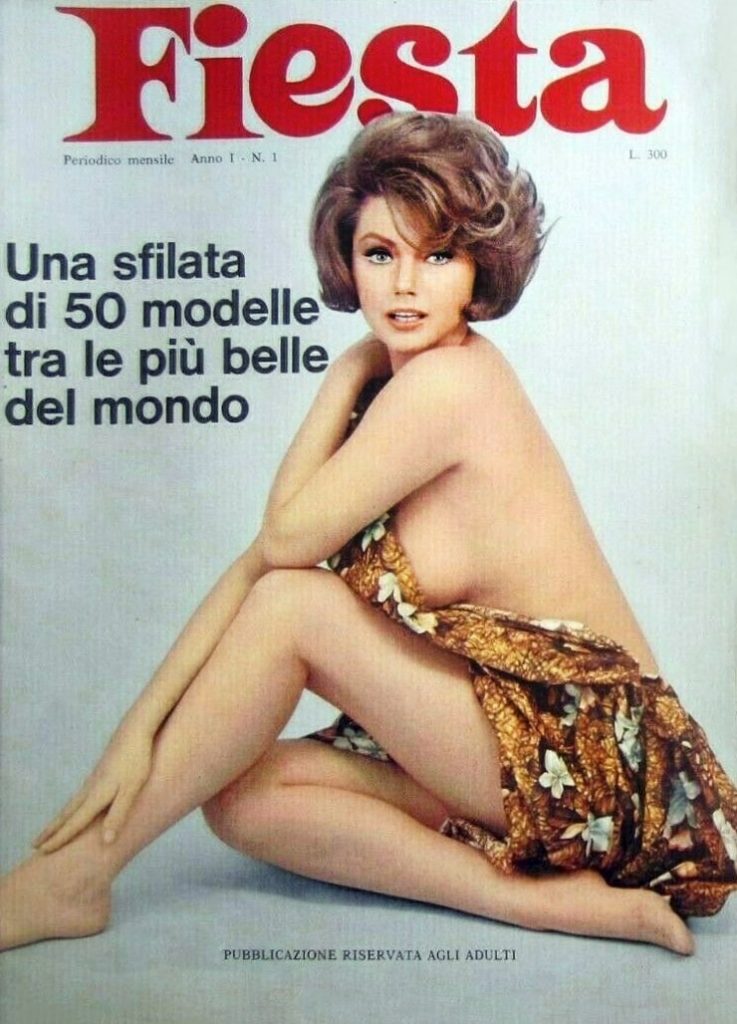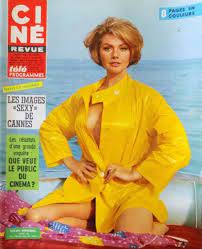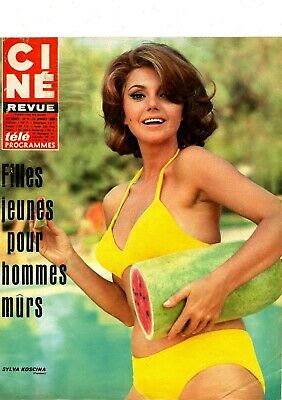

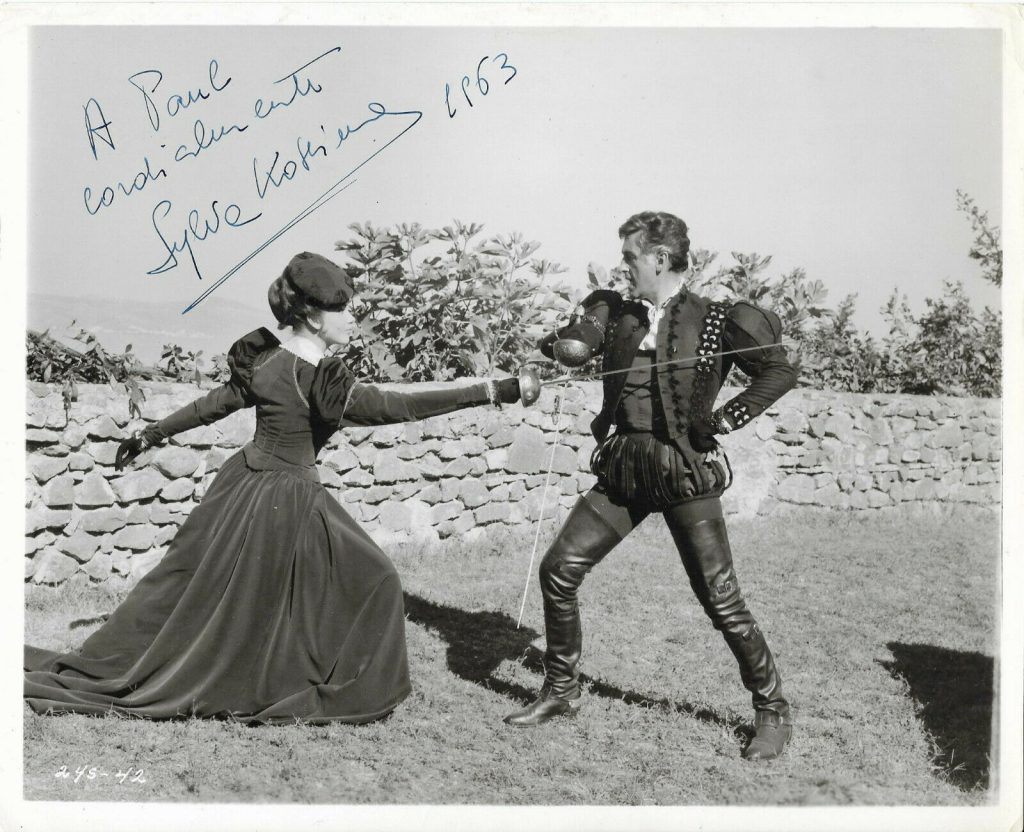
Sylvia Koscina obituary in “The Independent”.
Sylva Koscina was a beautiful Yugoslav actress who was featured in many Italian epics of the late 1950’s onwards. She starred opposite Steve Reeves in “Hercules”. By the mid 1960’s she was making international films including two films in Hollywood, “The Secret War of Harry Frigg” with Paul Newman and “A Lovely Way to Die” with Kirk Douglas. She did not remain in the USA and returned to European filmmaking. She died aged 61 in 1994.
Sweet, smiling, curvaceous Sylva Koscina was a symbol of the Italy of the Sixties, incarnating the optimism of the years of the Italian economic miracle.
Throughout that period, Koscina was Italy’s version of a Hollywood glamour queen, and movie posters never failed to enhance her ample bosom. But she was no maneater. Even at the peak of her success, there was often a touch of sadness in the famous smile.”She had the typical melancholy of the Slavs,” recalled Dino Risi, who directed her in a series of comedy roles. “I never managed,” she herself admitted, “to unite the actress and the woman in a single person.” Most of her friends agreed Koscina’s problem was that she always fell in love with the wrong man. They believed that “She always wanted to redeem them and it isn’t easy to save someone who doesn’t want to be saved.”




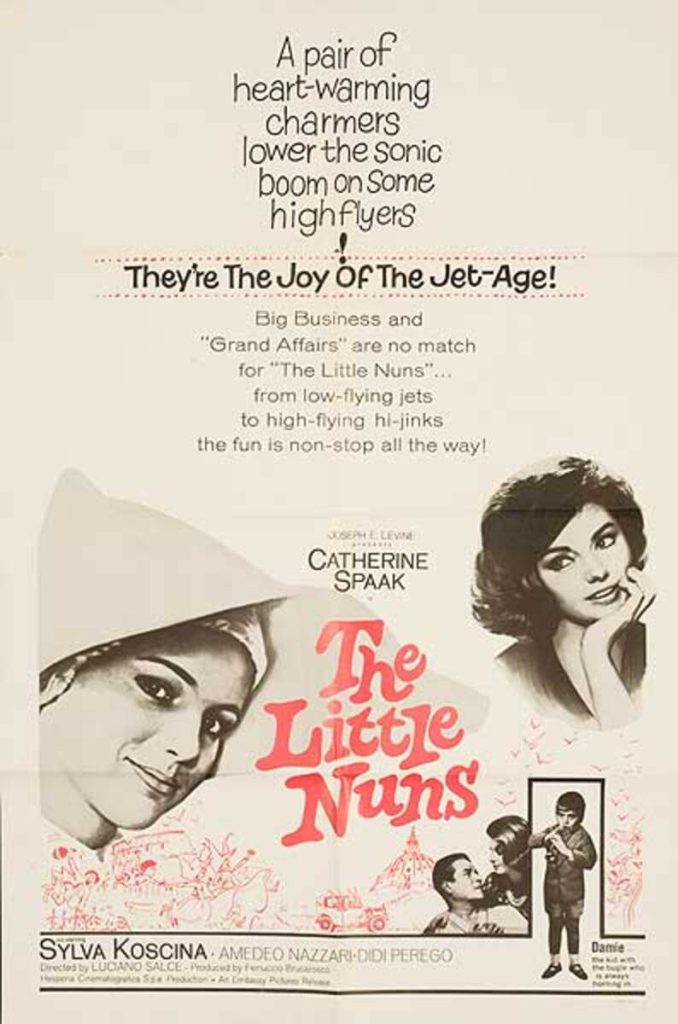






Koscina was born in Zagreb and brought to Italy during the Second World War by her sister, who had married an Italian. In Naples, she graduated from high school and studied physics at the local university.
Her film career began by chance, after one of her teachers had persuaded her to be among the girls who greeted the winner of one of the stages of the bicycling Tour of Italy. The photograph of the beautiful young woman kissing the ace cyclist Rik Van Steenbergen ended up in all the Italian papers, attracting the attention of various Italian film-makers.
Pietro Germi, one of Italy’s most famous and most controversial directors, picked Koscina to play opposite himself in his neo-realist masterpiece Il ferroviere (“The Railwayman”, 1956), in which he portrayed a railwayman struggling against poverty and injustice.
In 1957, Koscina starred in The Labours of Hercules, by Pietro Francisci, until then an obscure director, the film that started the revival of a typically Italian genre and made mythological giants such as Hercules, Ursus, Maciste and Samson famous throughout the world. The first of the Hercules series, Le fatiche di Ercole, like many of its followers, grossed a fortune in Italy and in the US, luring many American businessmen into investing in the genre and turning the Cinecitta studios, in Rome, into Hollywood on the Tiber. This film and others of the same genre made Koscina one of Italy’s best-loved stars.
Afterwards, Koscina starred in many, mostly second-rate,comedies that were popular for over a decade, including Dino Risi’s Nonna Sabella (1957) and Luigi Zampa’s Ladro Lui, Ladro Lei (1958), where she starred opposite Alberto Sordi.
Italy’s cinema then centred on the male and, between 1959 and 1968, most starring roles went to a small group of actors including Ugo Tognazzi (62 films), Enrico Maria Salerno (40), Alberto Sordi (34), Vittorio Gassman (33) and Nino Manfredi (32). It is easier to understand Koscina’s popularity if one considers that, with 46 films, she was the only female who starred in as many films as the top men.
In 1965, she played the role of Juliet (Giulietta Masina)’s sister in Federico Fellini’s Giulietta degli Spiriti (“Juliet of the Spirits”), probably the most important of all her films.
Koscina had a brief, largely unsuccessful stint in Hollywood, during which she starred opposite Kirk Douglas in A Lovely Way to Die (1968).
As an actress, Koscina took herself very seriously, and was made fun of by friends for her habit of always referring to herself in the third person. But, by the time she had learnt to act, her career was almost over. Unlike other Italian actresses, including the likes of Sophia Loren and Silvana Mangano, whose careers were boosted by their producer-husbands Carlo Ponti and Dino de Laurentiis, Koscina received no help from her own husband, Raimondo Castelli, who only pushed her to act in as many films as possible.
Koscina had created a major scandal in Italy when she was indicted for bigamy, after a Mexican marriage to Castelli, who was already married. The marriage ended badly, some years later.
“For too long I worked like a madwoman, doing eight to ten films a year, just to make money and then spend it all,” Koscina once said. “I played the role of the vamp without ever believing in it.”
In the 1970s, Koscina became the first Italian actress to appear in the American edition of Playboy magazine. She appeared in various television series in the Seventies and the odd film or two in the Eighties. In recent years, she was a frequent guest ontelevision talk-shows where she was invited as an “ambassadress of beauty and good taste”.
Koscina contracted breast cancer a few years ago. After a first operation, she had always minimised the seriousness of her condition and had not hesitated to talk about her sickness, in order to send a message of hope to other women.
“The Independent” obituary can also be accessed on-line here.
Tribute
2014

Sweet looking with a fair degree of talent, Sylva Koscina had a film career I’ve always found interesting. Mixing Hollywood, European and Art-house, for three decades Sylva certainly kept herself busy on both sides of the Atlantic.
Born in Yugoslavia on August 23rd 1933, Sylva moved to Italy during the Second World War, later studying physics at university. She was spotted in a photo by controversial director Pietro Germi, who cast Koscina in his 1956 feature ‘The Railwayman’. With her career taking off, Sylva’s early films were low-brow Italian comedies and sword & sandal pictures, such as ‘Hercules’ (‘58) and its 1959 sequel ‘Hercules Unchained’, both starring Steve Reeves. A couple of cult features followed, with George Franju’s pulp crime pic ‘Judex’ (’63), playing an acrobat aiding the hero at the movie’s climax, and then as Giulietta Masina’s saucy sister, in Fellini’s colourful fantasy ‘Juliet of the Spirits’ (’65).
Sylva ventured to England at this time to co-star in a couple of spy comedies directed by Ralph Thomas. The first; ‘Hot Enough for June’ (’64) starred Dirk Bogarde as writer travelling to Prague, where he is assigned a beautiful tour guide, played by Koscina. The second was the enjoyable Bulldog Drummond adventure ‘Deadlier than the Male’ (’67), alongside Richard Johnson and Elke Sommer. Flirting with Hollywood, Sylva was paired with Kirk Douglas in the watchable 1968 drama ‘A Lovely Way to Die’, in which she played a widow accused of her wealthy husband’s murder. Also that year she starred in Jack Smight’s enjoyable WWII comedy ‘The Secret War of Harry Frigg’, playing an Italian countess romanced by Paul Newman’s US soldier. Back in Italy Sylva bared all in the obscure drama ‘He and She’ (’69) with Laurence Harvey, before being cast as Rock Hudson’s love interest in the WWII drama ‘Hornets’ Nest’ (’70). An ok actioner, Hudson plays an injured American commando rescued by a gang of orphans who, along with Koscina’s reluctant German medic, nurse him back to health in order for him to teach the kids how to shoot, so they can defend their village from the Nazi’s. Also that year, Koscina co-starred with Monica Vitti in the Italian comedy ‘Ninì Tirabusciò’, which saw the pair in a brief but memorable topless duelling scene.
A scandal arose in 1967 when Sylva married her long-term partner Raimondo Castelli (who was already married at the time), although they would later divorce bitterly in 1971. Koscina is largely remembered for her appearances in a handful of early Seventies giallo entries. In 1972’s ‘So Sweet, So Dead’, she co-starred with Farley Granger in a sordid serial killer tale, while also that year she made the excellent ‘Crimes of the Black cat’ (’72), a colourful mystery which reveals Sylva as the killer of various fashion models at her photographic studio. Around this time Koscina had the distinction of being the first Italian actress to appear in the American edition of Playboy, which was probably no big deal to Sylva as she hated wearing bra’s in real life, and would only wear them in movies that required her to.
1975 saw Sylva re-team with Elke Sommer for Mario Bava’s controversial and bizarre horror; ‘Lisa and the Devil’, which had Sylva running over her aristocratic husband’s body with her car. A flesh-baring role came in ‘Casanova & Co.’ (’77), a below-par romp with Tony Curtis and euro-babes Marisa Mell, Olivia Pascal and Britt Ekland. Koscina’s last movie of note was the ambitious international comedy ‘Sunday Lovers’ (’80), after which her film career pretty much stalled, with only a few appearances in the odd TV movie in the 1980’s.
Sadly, having been diagnosed with breast cancer some years prior, Sylva died in Rome on Boxing Day 1994, aged 61. With a fascinating and varied career lasting nearly forty years, the beautiful Sylva Koscina was one of Italy’s most famous screen queens. A kind, caring person who always took her work seriously, Sylva remains to this day, a popular cult figure in Italy and around the world








